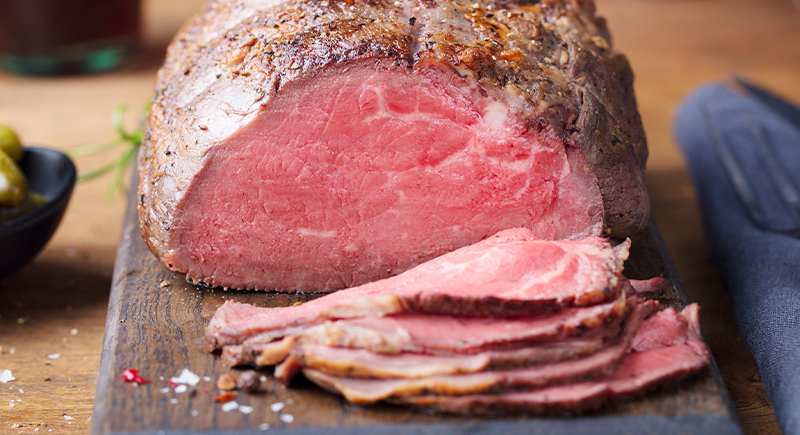Recreate That Classic Arby’s Flavor with This Cut of Meat
Fast food cravings hit hardest when distance makes them inconvenient. Arby’s roast beef is one of those desires that can be difficult to satisfy if the nearest location is far away. The sandwich has a very particular taste and feel, which makes a regular deli substitute unsatisfying. The appeal lies in its soft shavings of meat and the way it stacks so high inside a bun.
Recreating this experience at home may seem out of reach, but the process is simpler than it looks.
Why Arby’s Meat Stands Out
The roast beef at Arby’s has a texture that doesn’t compare to typical home roasts. It is smooth, tender, and evenly colored, without browned edges or uneven cuts. That consistency comes from the way the meat is processed. Arby’s takes beef, grinds it, and shapes it into loaves that can be cooked and sliced with precision. This explains why each sandwich tastes identical, no matter the location.
Over the years, rumors about its preparation have spread, ranging from claims of gelatin to horse meat. None of them are true. To counter those ideas, the company even produced a marathon-length commercial showing brisket cooked in real time.
Choosing the Right Cut
When building a sandwich with the same qualities, the cut of beef matters more than any other detail. The round primal, which comes from the hind leg and rump, delivers the best results. This section of the steer is naturally lean, and while it doesn’t carry much fat, it stays firm enough to carve into delicate sheets once cooked.
Eye of round is a narrow, uniform cut that holds together beautifully during slicing. The top round gives a little more taste while staying tender if treated properly. On the other hand, the bottom round is usually the cheapest option and can still mimic the Arby’s composition with the right cooking technique. These cuts can be tough if roasted carelessly, which is why gentle preparation is crucial.
Preparing the Roast

Image via iStockphoto/AnnaPustynnikova
Start by tying the roast with butcher’s twine so it keeps a consistent shape, which helps produce even slices later. Brown the outside in a skillet for richness, then cook it slowly in a bath of beef broth, butter, and simple seasonings.
This low and moist heat helps the meat stay tender and adds depth to the flavor. Once finished, the roast must rest. Chilling it for a short time is even better because the firmed-up texture makes it possible to shave slices almost paper-thin. A long, sharp knife or slicer works best. Keep in mind that cutting against the grain ensures the meat won’t be stringy.
Each of these steps works together to produce slivers that bend easily and stay juicy, which is exactly what sets Arby’s roast beef apart.